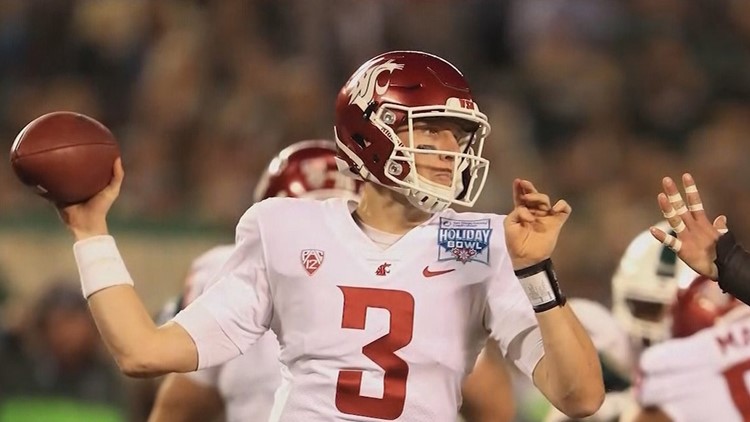Football killed Tyler Hilinski.
Officially, the Washington State quarterback’s cause of death was suicide. But that seems to be a matter of semantics after Tuesday’s news that Hilinski had the early stages of chronic traumatic encephalopathy (CTE).
Hilinski was 21 when he shot himself Jan. 16. Yet his father said on NBC’s TODAY Show that medical examiners said his son had the brain of a 65-year-old.
While the NFL dithers about the need for more information and CTE deniers try and gum up the conversation by suggesting accidents or lifestyle choices are to blame, Hilinski’s death lays bare an ugly truth: Football can kill.
And that ought to terrify any parent who is wary of their son, or daughter, playing the sport at a young age.
“Did football kill Tyler? I don’t think so,'' Hilinski’s mother, Kym, says in a Sports Illustrated documentary about her son’s death. "Did he get CTE from football? Probably. Was that the only thing that attributed to his death? I don't know."
We'd better find out.
Football is far and away America’s favorite sport, and no one wants to see it disappear or diminished to the point of being a niche sport, much like boxing and horse racing have become. But if football is to survive, everyone who loves the game has to acknowledge the game’s risks and, where able, do whatever is necessary to mitigate them.
That starts with getting answers to the most vexing questions behind CTE and other neurodegenerative brain diseases.
While researchers have established a link between repetitive head trauma and CTE, there still is much that remains unknown. How many hits to the head are too many? Why do some athletes in contact sports develop it and not others? Are there aggravating factors, such as age when someone starts or how often someone practices or plays?
And how could a 21-year-old have a brain that was that badly damaged already?
As heartbreaking as the stories are of former NFL players who had mood swings, dementia or, in the very worst cases, committed suicide, they at least are understandable. Two decades of violent hits and full-speed collisions are bound to take a toll, and the damage can’t be limited to knees, ankles, elbows and shoulders.
But Hilinski’s death defies reason. He spent most of his career as a quarterback, a position not as prone to violent hits as, say, linebacker or lineman. His parents say their son did not have a history of concussions or head trauma, though he did take a hit against Arizona last season that “rocked” him.
Yet Hilinski, who had always been so good-natured and even-keeled, showed signs of depression last fall. Then, on Jan. 16, he shot himself.
Making his death even more frightening is that it cannot be written off as some aberration. Hilinski is the second active college player to be diagnosed with CTE; Owen Thomas, a defensive end at Penn who was 21 when he committed suicide in 2010, also was in the early stages of the disease.
In a Boston University study of former football players released last summer, 48 of 53 college players were found to have CTE. Granted, these brains were donated by players or family members who suspected they had the disease before their death.
Still, the numbers were striking. And, given the diagnoses of Hilinski and Thomas, chilling.
Now, this is not to say every kid who plays football will develop CTE. Or that parents are gambling with their child’s future by signing a permission slip for that local youth league. But when there is still so much we don’t know, when damage doesn’t become clear until it’s too late, why would any parent take the chance of letting their child play tackle football before he or she is 12 or 14, as many researchers now recommend?
There are those who will say that’s alarmist, who will contend that the game has never been safer because of changes in equipment and tackling technique. Are they willing to stake a child’s brain on that? Are they willing to stake their child’s brain on that?
Waiting until junior high or high school to start playing tackle football isn’t going to block anyone’s path to a college scholarship or an NFL. It will help protect their long-term health, however.
It might even save their life.



